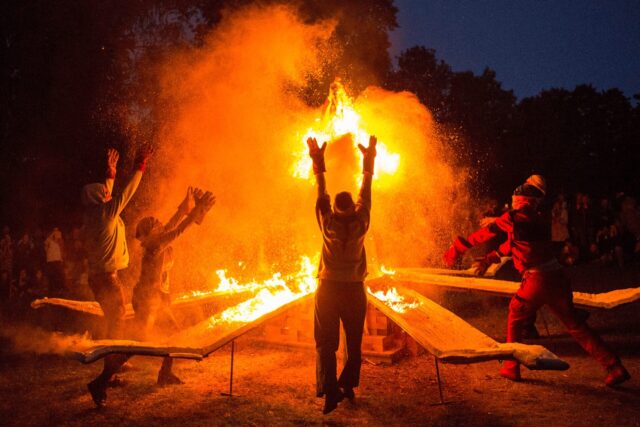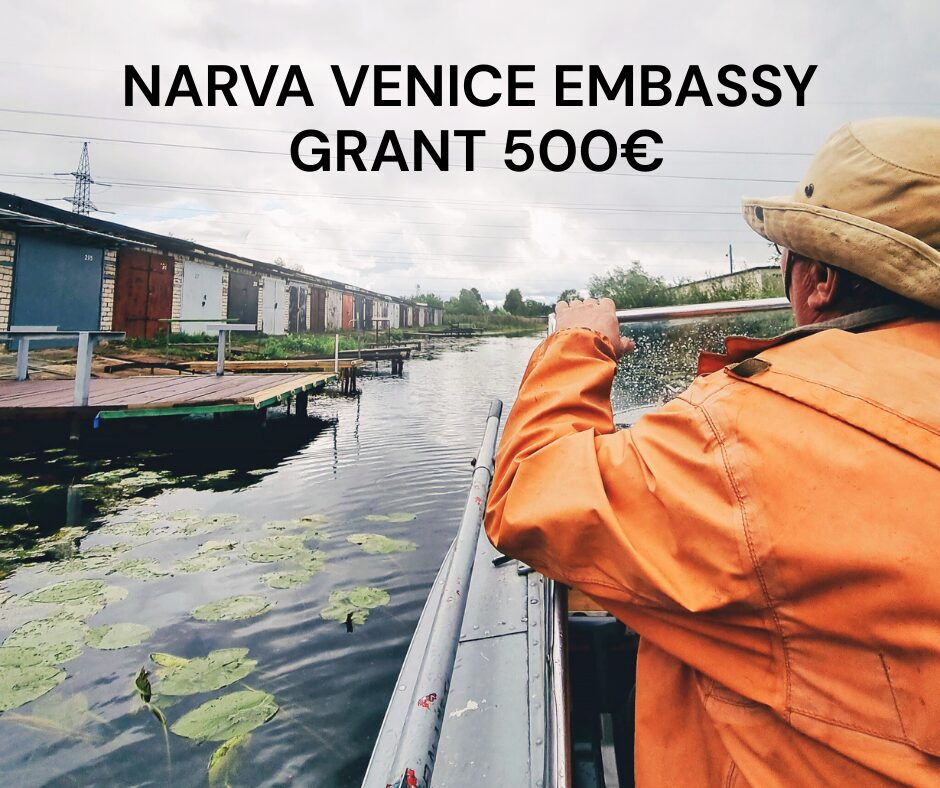The essay is published in the context of the exhibition Splitting the Atom (splittingtheatom.cc) at the Contemporary Art Centre (CAC), Vilnius
Since the dawn of the nuclear age in the 1940s, scientists have been working on the development of power reactors – fast reactors and slow; uranium, plutonium and thorium fueled; with water and heavy (liquid) metal and other coolants; compact and large; even mobile and portable. The goal has been to generate thermal and electrical energy safely and cheaply, or at least cheaply in comparison with other power possibilities: coal, oil and gas; hydroelectricity; wind and solar; and so on. But if the design of reactors relies on cost and safety concerns, it also derives on such other, often unspoken considerations as national engineering culture and traditions and on what specialists may think the public response will be to the deployment of massive power reactors. The question of creating public trust in this new technology – and maintaining it over 70 years of successes and failures, power production and accidents – comes to the fore.
However, trust is like fresh goods that have an expiration date. This becomes clear when things do not go according to plan, whether the plans are geopolitical (reflecting state goals), technical (concerning engineering targets) or cultural (indicating public traditions, beliefs and practices). Twentieth century modernity has been characterized by generally increasing trust in science. Scientific experts were not always trusted: indeed, they have often been met with skepticism and resistance, for example, census officials registering populations in the northwestern regions of the Russian Empire or peasants in the French Algeria, or a number of populations regarding vaccinations to this day.
During World War I and II citizens developed trust in their scientists, even when they created such deadly technologies as chemical, biological and nuclear weapons.[1] Later, Cold War competition between the first nuclear nations to demonstrate a prevailing interest in peaceful applications even though military considerations were paramount bolstered this trust, at least to the point when the over-the-top confidence of the military-industrial complex became questioned, or such scandals as Thalidomide birth defects (1950s) and chemical destruction of nature (Minamata disease, 1950s; Silent Spring,1962; Agent Orange defoliation of Vietnam) rocked the scientific establishment. Stanley Kubrick’s Dr. Strangelove: Or How I Learned to Stop Worrying and Love the Bomb (1964) mocked the nuclear establishment, establishing a genre of criticism. More recent cinematic efforts have questioned the relevance for nuclear science for key human needs: remember Luc Besson’s entertaining The Extraordinary Adventures of Adèle Blanc-Sec (2010) where a revived Egyptian mummy announces proudly, to the great disappointment of his interlocutors “I am a nuclear physicist.” Nuclear power engineers, in this way, must engineer not only their reactors, but also the contexts of their use. And yet, various publics have grown, again, weary of scientific certainty, for example regarding nuclear power.
Engineering certainty, and the belief that citizens must simply trust the experts to make the best possible choices, led to the construction – or abandoned construction of reactors on or near earthquake fault lines (California, Armenia, Crimea, Japan). Tied to the effort to build bigger and bigger units with the plus of producing plutonium it led to the design of the inherently unsafe Chernobyl-type RBMK reactor with its positive void coefficient, deployed not only at Chernobyl, but near Leningrad, in Lithuania, and still operating at other sites in Russia. It led to the wholesale deployment of now 450 reactors worldwide with inadequate evacuation plans, provision of iodine tablets for nearby residents in case of an accident, and an operating culture that “an accident cannot happen here.” Indeed, the INES (International Nuclear and Radiological Event Scale) system to let world citizens know of “incidents” and “accidents” by their severity was created only in 1990, nearly forty years after the dawn of the nuclear era, and is used on a voluntary basis to rate and communicate “events” that occur within a territory; its website notes “it is not a notification or reporting system to be used in emergency response.” The computer powered, full scale, full scope simulators that enabled training of nuclear reactor operators were produced from the 1980s, when computer processing power finally reached capacity to model reactor activities. Until then, reactor operators had to rely on software and their own experience to anticipate the unpredictable.

Splitting the Atom, graphic design by Vytautas Volbekas, with still image from Susan Schuppli, Trace Evidence, 2016. Photo: Dainius Putinas
The implicit and explicit exclusion of the public in decision-making about siting of reactors and the determination about how safe is safe enough to permit their deployment and start up reveals that, at least initially, the nuclear establishments of the world were not concerned with generating trust in nuclear technology among various publics. They were convinced that their systems were safe enough and likely believed that the public could not understand the technical issues well enough to be rigorously involved.[2]
And yet from the 1960s and 1970s in the more open regimes of Western Europe and the United States, if not the authoritarian socialist states, public protest revealed deep concern about the safety, environmental stability, and political implications of nuclear power. In the US many of the claims reflected worries about the environmental damage to be wrought by nuclear power. Beginning with protests against construction of a reactor at Bodega Bay, CA, in the 1960s, and maturing in the work of the Abalone Alliance (1977-85) against the Diablo Canyon nuclear power station, eventually built but at great cost, and to be shut down in a few years, and of the Clamshell Alliance (mid-1970s-1990s) against the Seabrook, New Hampshire, station, anti-nuclear fervor grew in America directed against the lack of trustworthiness of the industry.[3] On top of this, the release of US Atomic Energy Commission documents that revealed the ad hoc nature of safety decisions that relied entirely on industry assessments (“regulation by the regulated”).[4] In Germany and in France anti-nuclear sentiment hatched because citizens saw nuclear power as ominous, an industry that required authoritarian, police measures to operate safely. In Denmark, Austria and elsewhere these same issues and others gave rise to nuclear protest.[5] In Soviet Lithuania, local scientists opposed the siting of Ignalina nuclear power plant in the country and raised the question of the future management of radioactive waste as early as in the late 1970s.[6]
Not only the undemocratic process of siting nuclear power plants, but also a series of accidents undermined trust. This began, notably, with Three Mile Island, Pennsylvania, a partial meltdown, that revealed lack of a culture of accountability among operators according to the official Kemeny Commission on the accident (both 1979).[7] The failure of the Soviet regime to communicate danger and evacuate affected populations for days after the Chernobyl disaster (1986) also clearly shook trust and engendered anti-nuclear movements across the socialist world.[8] In Lithuania, the first public opinion surveys about nuclear energy were conducted in 1988-1989. They revealed that the public were uncertain about the safety of RBMK reactors. And the Fukushima disaster (2011) simply astounded even uninformed citizens: how could engineers site a nuclear power station precisely in an earthquake/Tsunami danger zone with certainty that everything would always operate perfectly?
By the 2000s virtually all nuclear establishments throughout the world engaged the public to build trust in reactor energy. They have citizen review boards; legal systems that permit public intervention; well-staffed and managed information centers and PR employees. They are particularly active in working with publics to determine what to do with the roughly 250,000 tons of high level radioactive waste that has accumulated at nuclear power stations and at temporary storage facilities around the world, although the effort to manage that waste was long in coming and will be an expensive and unsure proposition for some time.
These trust building activities have become more visible when plans for new nuclear power plants and radioactive waste depositories are proposed. In Lithuania, a country that was saddled with the legacy of the Soviet nuclear complex, a new generation of experts emerged during the two decades leading up to the shutdown of the two Ignalina reactors (in 2004 and 2009, a condition of Lithuania’s accession to the EU (2004). Shortly after this, a proposal to build a new power plant, equipped with one or two Advanced Boiling Water Reactors (ABWR, 3200 MWe capacity) designed by the Japanese company GE Hitachi was set forth in 2007. The proposal faced a national referendum in 2012, where the majority voted against the new reactor; this was an expression of popular will that was regarded by many people as a long-awaited victory of democracy over technoscientific planning, and as an unfortunate consequence of what was perceived as uninformed decision making by others.
Much of the debate revolved not so much around the economic profitability and political expedience of the envisaged Lithuanian nuclear power plant, as around reactor safety and trust. The promoters of the ABWR reactors insist that these so-called generation III nuclear reactors include significant safety design improvements. The ABWRs have been enhanced after Fukushima: it has an alternative power supply and features to ensure restoring cooling functions in an emergency. Critics, however, point out that like many other reactors, the ABWR has had its share of safety problems, such as an accident connected with a turbine at the Hamaoka NPP in Japan.[9] More generally, they insist, this project, and its safety and economic burden on generations to come, has not been sufficiently discussed with the public.

Augustas Serapinas, Yelena and Vera, 2020. Photo: Dainius Putinas
Reactor safety fuels the ongoing debate in the Lithuanian media as Lithuanian society has been following the Astravets nuclear power plant, being built by the Russian nuclear authority, Rosatom, on the Belarusian border with Lithuania, to begin operation in 2021 or soon thereafter. Astravets features Russian VVER type reactors, an upgrade of the standard Soviet pressurized water reactors (PWRs), with additional safety measures developed after Chernobyl disaster, such as a core catcher. The core catcher, at the bottom of the reactor, is intended to prevent the leakage of molten fuel in case of an accident. Like PWRs worldwide, VVERs are the most common type of the reactors operated in Russia. They are safer than RBMK: they are more stable and, unlike RBMK, most of them have a containment structure, a metal or concrete enclosure that prevents the spread of fissile materials in case of an accident. However, this and other technical improvements do not appear to persuade the Lithuanian public of the safety of the Astravets NPP. They have lobbied the EU to monitor the project and have carried out emergency evacuation scenarios. In fact, Rosatom has had difficulties in gaining customers for VVERs in Europe beyond those built in the socialist era in Bulgaria, Hungary, and Czechoslovakia, except for in Finland, likely because of concerns about repairs, fuel supply, and perhaps over automated reactor control systems. Current Rosatom customers are Turkey, China, Bangladesh, Iran, Egypt – and Belarus.
In Belarus, a public opinion survey conducted in April-May 2019 by National Academy of Sciences revealed support for nuclear power, with roughly 60% of respondents in favor, and approximately 26% against the Astravets NPP, with ~ 13% undecided.[10] Part of the reason for this support may be the commitment of the president of Belarus, Aliaksandr Lukashenka, for nuclear power as a sign of the modernity of the nation and signal that Chernobyl is in the past. Those who favor Lukashenka therefore also likely favor the station. It should be noted that world leaders often use technological achievements to bolster their standing and legitimacy with citizens: Joseph Stalin’s aerial and polar expeditions in the 1930s; Franklin D. Roosevelt and Jawaharlal Nehru’s big hydroelectricity projects; John F. Kennedy’s promise in 1961 to put a man on the moon by the end of the decade; and scores of other examples intended to earn public trust in times of challenge. The trust in Lukashenka, however, has been faltering, with large and unprecedented political unrest erupting following the presidential election of August 2020. Will these protests diminish the support for the new power station project?
Astravets NPP is a joint Russian-Belarusian project. Scientists from the Belarusian Joint Institute for Power and Nuclear Research have been involved in the construction, and the nation has expanded engineering and operator training programs. To some observers, the large contribution of Russian engineers and workers to Astravets suggests the scenario just across the border in Visaginas, Lithuania, where a Russian colony was built in the 1970s and 1980s to support the two Ignalina reactors.
If there appears to be sufficient national “expertise” to manage the plant, in the end the entire Belarusian nation will be the owner of its future legacy – the radioactive waste – and any problems of safety and trust that result. The Belarusian government plans to send the spent nuclear fuel (SNF) for reprocessing to Russia, just like Ukraine has been doing for a large part of its SNF. The high-level waste from reprocessing will return to the country, however, and will be disposed together with other types of radioactive waste produced by the station at a facility that the government will build. According to the Belarusian Strategy of Nuclear Waste management the operating organization of the NPP finances the radioactive waste management from a specially created fund for decommissioning.[11] This is a standard model used worldwide to provide for future waste management. However, the costs for safe storage of radioactive waste tends to be downplayed and insufficiently supported. This suggests that in the end the tax payers and the Belarusian government, not Rosatom, will be responsible for the cost of radioactive waste management.
Debates over the politics, security and safety of nuclear power in Lithuania and Belarus, particularly the future of Astravets, form an important opportunity to raise questions about public literacy in science and technology, and also the scientists’ and engineers’ understanding of the wider social and political conditions and consequences of their work. Like the atom itself, public trust in scientific expertise only appears to be solid, especially when the technology in question is large scale like a reactor – and in the sceptics’ backyard. And even leaders of liberal democratic regimes have recently shown their lack of trust – and scientific illiteracy. Yet the attacks against scientists from Donald Trump and Boris Johnson did little to unseat their governments, even in the context of mismanaged response to the global pandemic of Covid-19.
To question politicians is widely accepted as a principle right and duty of the citizen in a liberal democracy. However, the right to question safety of techno scientific infrastructures is not as self-evident, although nuclear history and policy provide a framework for analysis of this question. The popular HBO miniseries Chernobyl (2019), much of which was filmed at Ignalina nuclear power plant, allowed us to see the invisible: to look into the reactor explosion as it happened. By making it very clear what a complex beast a reactor is – technically, organisationally, culturally, socially and politically – as well as to clarify its afterlife as a pile of radioactive waste, the debate will hopefully contribute to a better informed society.
[1] Susan Linde, Rational Fog (Cambridge, MA: Harvard University Press, 2020).
[2] Brian Balogh, Chain Reaction: Expert Debate and Public Participation in American Commercial Nuclear Power, 1945-1975 (New York: Cambridge University Press, 1991).
[3] John Wills, Conservation Fallout: Nuclear Protest at Diablo Canyon (University of Nevada Press, 2006).
[4] AEC, The Safety of Nuclear Power Reactors (light water-cooled) and Related Facilities, WASH-1250 (Washington: AEC, July 1973).
[5] Astrid Kirchhof and Jan-Henrik Meyer, “Global Protest Against Nuclear Power. Transfer and Transnational Exchange in the 1970s and 1980s,”Historical Social Research, 39 (1), 2014, pp. 165 – 190.
[6] Andrei Stsiapanau, Lithuania: Short Country Report, HONEST, 2018.
[7] James Kemeny, et al., The Need for Change: The Legacy of TMI (Washington: The President’s Commission on The Accident at Three Mile Island, October 1979).
[8] Jane Dawson, Eco-Nationalism: Anti-Nuclear Activism and National Identity in Russia, Lithuania, and Ukraine (Durham: Duke University Press, 1996).
[9] Charles Digges, “Lithuanian polls suggest country opposed to new plans for nuclear reactor build: Hitachi remains optimistic,” Bellona, August 8, 2012, https://bellona.org/news/nuclear-issues/2012-08-lithuanian-polls-suggest-country-opposed-to-new-plans-for-nuclear-reactor-build-hitachi-remains-optimistic.
[10] Interfax-Zapad, “V Belarusi snizilos’ kolichestvo storonnikov stroitel’stva AES i iadernoy energetiki – opros,” January 21, 2020, https://interfax.by/news/policy/vnutrennyaya_politika/1270243/.
[11] Belta, “Pravitel’stvo utverdilo strategiiu obrashcheniia s otrabotavshim iadernym toplivom BelAES,” August 26, 2019, https://atom.belta.by/ru/belaes_ru/view/pravitelstvo-utverdilo-strategiju-obraschenija-s-otrabotavshim-jadernym-toplivom-belaes-10339/.

Contemporary Art Centre (CAC), Vilnius. Photo: Dainius Putinas

Schuppli Delay Decay BM 2016. Photo: Dainius Putinas

Susan Schuppli, Delay Decay, 2016 (fragment). Photo: Dainius Putinas

Yelena Popova, Visaginas Parquet RMBK-1500, 2000; Keepsafe I-II, 2020; and Ripple Marked Radiance After Hertha Ayrton, 2019. Photo: Dainius Putinas

Yelena Popova, One Too Many, 2018. Photo: Dainius Putinas






























